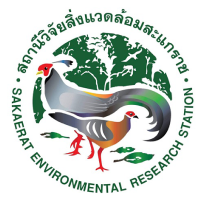Keywords :
Ants; Hymenoptera; Terrestrial Ants
บทคัดย่อ :
The ants (Hymenoptera: Formicidae) are a large component of the arthropod community on ground in forest ecosystems and contribute valuable data to study of comparative biodiversity and conservation. However, recent ant studies in Thailand, there was little known about the environmental factors under difference vegetation types that influence the community structure and dynamics of the terrestrial ants these assemblages. Studies on ant were carried out at sakaerat environmental research station during September 2004 to August 2005. Aims of this study were to study the diversity and community structure of ants in four different vegetation types: (i) dry evergreen forest (DEF), (ii) dry dipterocarp forest (DDF), (iii) mixed dipterocarp forest (MDF) and Acacia auriculaeformis plantation (APT). Standard sampling methods (Winkler leaf litter extraction, direct sampling and soil sampling) were used to collect ants. A total of 130 ant species comprising 56 genera in 9 subfamilies were identified from samples were found in all habitats combined. The seasonal changes has influenced on ant presenting in which the number of ants had highs in DEF in the dry season, 63 species, while, 87 species was found in DDF during the wet season. The results of ant community structure showed that ant species, abundance, Shannon diversity and evenness index of ants were significantly higher in wet season than those in dry season in DEF and DDF. The values of similarity index among the forest types were higher than 50% indicating that most ant species can live in both deciduous and evergreen types. Meanwhile, the relationships pattern between the soil and litter moisture correlated with ant species and abundance of terrestrial ant species. Three main conclusions were drawn from this study: (i) the different vegetation types supported different level of ant species, abundance, and ants community both in leaf litter and soil, (ii) the relationships between ant species and community of ants showed a significant response to variation of environmental factors under seasonal change in each vegetation type, (iii) the natural forests are near reforestation and may serve ant diversity. This study provided the basic knowledge about the ant community structure and species in specific vegetation types which can be used as an indicator to detect the negative effect of disturbance in ecosystem for future plan of sustainable utilization and forest conservation.
เอกสารอ้างอิง :
Hasin, S., Tasen, W (2008) Diversity and community structure of terrestrial ants in difference vegetation types at sakaerat environmental research station, nakhon ratchasima province



